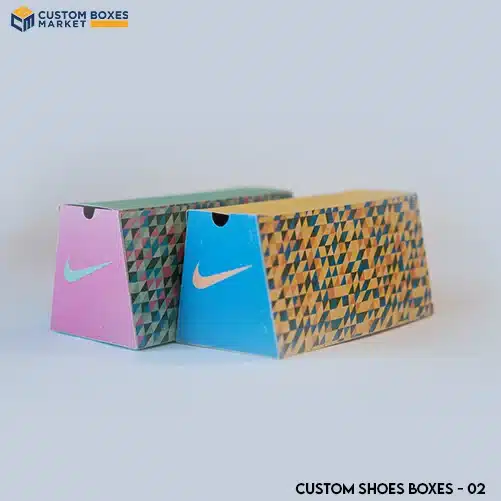Business
Amazon Lets Customers Try Clothes Before They Buy
Nulla pariatur. Excepteur sint occaecat cupidatat non proident, sunt in culpa qui officia deserunt mollit anim id est laborum.

Introduction
Shopping for clothes online can be a gamble. Sizes vary by brand. Fabrics look different on screen. Returns are a hassle. Now, Amazon Try Before You Buy aims to fix these problems. Through its Prime Wardrobe service, Amazon lets customers select items, have them delivered, try them on at home, and only pay for what they keep. No awkward fitting‑room moments. No instant returns. In this article, we’ll explore how Amazon’s program works, its benefits for shoppers and the company, and what it means for the future of clothes try-on online.
What Is Amazon’s Try Before You Buy (Prime Wardrobe)?
Amazon launched Prime Wardrobe in 2019 as part of its Prime membership. It lets Prime members choose three to eight fashion items—clothes, shoes, or accessories—and have them shipped together with free delivery. Customers get seven days to try on everything at home. Then they return unwanted items in the provided prepaid box. Amazon charges only for items kept, offering a streamlined “try before you buy” shopping model.
How It Works: Step by Step
1. Browse and Select:
- Sign in to Amazon and click “Prime Wardrobe.”
- Filter for eligible items with the Prime Wardrobe badge.
- Add three to eight items to your wardrobe box.
2. Home Delivery:
- All selected items ship together at no extra charge.
- You receive them in a single box, ready to try on.
3. Try On at Home:
- You have seven days to try on each piece.
- Test fit, color, and fabric in your own mirror and lighting.
4. Review and Return:
- Choose what to keep and what to send back.
- Place unwanted items in the same box, seal it, and drop it at UPS.
- No shipping fees for returns.
5. Pay for Kept Items:
- Amazon charges your card only for items you kept.
- Returned items never bill your account.
This simple cycle transforms how we shop for clothes online. You get the comfort of home try‑ons, and Amazon reduces return pains.
The Role of Virtual Try‑On Technology
In addition to Prime Wardrobe, Amazon is testing virtual try-on tools. Using your phone’s camera, you can see how items might look on you before ordering. Early versions let you adjust body size, choose colors, and view items from multiple angles. While still evolving, these AR features aim to cut down on returns by helping shoppers choose the right fit and style before the clothes ever leave the warehouse.
Amazon Style: Physical Try‑On in Smart Stores

Image by: Yandex.com
Amazon’s brick‑and‑mortar concept, Amazon Style, blends online and offline retail. In select malls, customers browse digital catalogs, then ask an associate—on an Echo Show—for items in various sizes and colors. These arrive in a smart fitting room, where a dedicated screen suggests matching pieces and allows reorders without leaving the room. This seamless merge of e‑commerce and in‑store fitting offers a preview of the future of retail try‑on.
Benefits for Shoppers
- Risk‑Free Shopping: Try on clothes at home before committing. No buyer’s remorse.
- Convenience: Skip store lines and fitting‑room wait times.
- Better Fit and Style Decisions: Test items in real settings—your mirror, your lighting.
- Cost Control: Only pay for items you keep. No hidden restocking fees.
- Reduced Return Hassles: Use the same shipping box. No labels to print or fees to pay.
By removing friction, Amazon makes online fashion shopping more user‑friendly and fun.
Benefits for Amazon
- Lower Return Costs: Grouping returns into one box cuts shipping and processing expenses.
- Data‑Driven Insights: Try‑on feedback helps Amazon refine sizing guides and product recommendations.
- Increased Sales: Shoppers are more likely to buy when they can test items risk‑free.
- Customer Loyalty: Prime Wardrobe adds value to Prime membership, reducing churn.
- Market Differentiation: This unique service sets Amazon apart from other online retailers.
Overall, the program helps Amazon boost revenue while optimizing logistics.
Impact on the Fashion Industry
Amazon’s model pressures other retailers to innovate. Brands like Zara, H&M, and Nordstrom are exploring similar at‑home try‑on services and AR tools. Traditional stores face competition as online merchants ramp up convenience features. The shift accelerates investments in omni‑channel retail, where digital and physical experiences merge. Industry analysts predict that by 2027, 60% of fashion sales will include some form of virtual or home try‑on, a direct result of Amazon’s leadership.
Challenges and Considerations
- Inventory Management: Shipping more items to individual homes strains stock control.
- Return Fraud: Some customers may abuse the free-try policy.
- Sustainability Concerns: Increased shipping generates more carbon emissions unless offset by bulk logistics.
- Sizing Accuracy: Even home try‑ons depend on reliable size guides and AR precision.
Amazon addresses these issues with advanced algorithms, bulk shipping discounts, and eco‑friendly logistics partnerships.
How to Get Started with Prime Wardrobe
- Join Amazon Prime: Membership is required.
- Visit Prime Wardrobe: Look for the “Prime Wardrobe” link on Amazon’s fashion pages.
- Select Eligible Items: Filter by “Try Before You Buy.”
- Place Your Order: Choose three to eight items and check out as usual.
- Try On and Decide: Take up to seven days to make your choices.
- Return or Keep: Follow the simple return steps or keep your favorite pieces.
With these steps, you transform your bedroom or living room into the best fitting room in town.
Future Outlook: The Next Level of Try‑On
Amazon’s innovations hint at a future where:
- 3D Body Scans: Smartphones capture precise measurements for flawless fit.
- AI Stylists: Virtual assistants suggest outfits based on past preferences.
- Sustainable Practices: Carbon‑neutral delivery and return consolidation reduce environmental impact.
- Global Expansion: Prime Wardrobe and virtual try‑on arrive in more countries, tailoring to local tastes.
As these features roll out, online shopping grows ever more precise, personal, and sustainable.
Conclusion
Amazon’s Try Before You Buy program and its virtual try‑on tools are redefining how we shop for clothes online. Shoppers now enjoy home trials without risk. They can see fit and style before paying. This reduces returns and increases satisfaction. Amazon Style stores with smart fitting rooms add more choice. As technology evolves, we may see more AR features and personalised recommendations. The shift to try‑on-first models marks a major change in retail. Soon, every retailer may follow Amazon’s lead to win over customers.
Business
Is Matty Boy Clothing US Legit?

Introduction
Are you at the hunt for elegant streetwear that makes a statement? Matty Boy Clothing has been making waves withinside the style scene, however with such a lot of manufacturers out there, it is crucial to realize if they are really well worth it slow and cash. This weblog submit dives deep into the whole lot you want to realize approximately Matty Boy Clothing—from consumer critiques and logo authenticity to pricing and transport rules. Buckle up as we discover this state-of-the-art label together!
Reviews and Customer Experiences matty boy clothing
Customer reports with MattyBoyClothing are varied. Many consumers rave approximately the stylish designs and particular patterns that set them aside from standard style manufacturers. These portions frequently end up favorites of their wardrobes. However, there are combined critiques concerning sizing and fit.
Some clients locate the apparel runs small, at the same time as others respect the true-to-length offerings. This inconsistency can result in a few frustration in the course of on line purchasing. Quality is every other factor of debate amongst buyers. While many reward the substances used, some have said troubles after numerous washes. It’s crucial for capability clients to maintain this in thoughts whilst creating a purchase. On social media platforms, remarks has a tendency to be lively. Fans proportion pics showcasing how they fashion their outfits, developing an attractive network across the logo’s photo and aesthetic choices.
Brand Authenticity and History matty boy clothing
Matty Boy Clothing has made a call for itself withinside the style world, mainly amongst streetwear fans. Launched with the aid of using an stimulated clothier with a ardour for city culture, the logo quick received traction. Its aesthetic blends formidable snap shots and cushty fit, attractive to a various target target market.
The imaginative and prescient in the back of Matty Boy is set greater than simply apparel; it is approximately self-expression and individuality. The enterprise emphasizes authenticity in its designs and advertising and marketing strategies. This dedication guarantees that each piece displays the essence of contemporary-day avenue fashion at the same time as last accessible. Over time, Matty Boy has advanced however retained its middle values. Its determination to first-class craftsmanship units it aside from many fast-style competition.
Pricing and Quality of Products matty boy clothing
Matty Boy Clothing has carved a spot with its particular offerings. Prices range relying at the item; however, they have a tendency to be aggressive withinside the streetwear market. Shoppers can locate the whole lot from photograph tees to hoodies that cater to distinct tastes with out breaking the bank.
The affordability makes it an appealing alternative for trendsetters trying to replace their wardrobes. Quality is every other issue really well worth noting. Many clients rave approximately the fabric’s experience and durability. Items are usually made from cushty substances that keep up properly after more than one washes. The stability of rate and first-class appears attractive, drawing interest from style fans keen for clean patterns at affordable costs.
Shipping and Return Policies mattyboyclothing
Matty Boy Clothing gives a sincere transport coverage. Orders usually deliver inside some enterprise days, making sure you might not be left ready too lengthy in your new gear. They offer monitoring statistics as quickly as your bundle is at the way, so that you can live updated. When it involves returns, their coverage appears affordable.
Customers have as much as 30 days from the shipping date to provoke a go back for unworn and unused items. This offers consumers peace of thoughts whilst making purchases. However, it is crucial to examine the first-rate print concerning who covers go back transport costs. In a few cases, clients may want to endure this fee themselves. Knowing those rules in advance of time allows in making knowledgeable selections at the same time as purchasing at Matty Boy Clothing.
Comparison with Other mattyboyclothing Brands
When evaluating MattyBoyClothing to different manufacturers, numerous elements come into play. Many competition provide comparable streetwear aesthetics however lack the particular designs that Matty Boy is thought for. For instance, at the same time as a few manufacturers cognizance completely on photograph tees and hoodies, Matty Boy integrates artistry with ordinary wear. This offers their portions a exclusive edge. Another issue is pricing.
While many options may appear less expensive in the beginning glance, the first-class of substances utilized by Matty Boy frequently justifies a barely better rate factor. It’s now no longer pretty much apparel; it is approximately network and identity. Brands like Matty Boy foster connections that resonate properly with their target target market in comparison to greater widely wide-spread alternatives to be had on line.
Is mattyboyclothing Legit?
When thinking about whether or not Matty Boy Clothing is legit, there are some key elements to weigh. The logo has garnered a mixture of critiques from clients. Some explicit pride with their purchases, bringing up first-class and fashion as highlights. Others have raised issues approximately transport instances or customer support responsiveness.
On the authenticity front, Matty Boy Clothing has a longtime on line presence that appears legitimate. However, it is constantly clever to test for certifications or possession information if you are involved approximately logo integrity. Pricing seems aggressive in comparison to comparable manufacturers withinside the market. Many clients experience they acquired correct price for his or her cash primarily based totally at the enjoy shared in critiques.
Business
Christmas Gift Innovations 2025: Fresh Ideas for Everyone

Introduction
Christmas 2025 is just around the corner, and everyone is looking for the perfect gift to surprise their loved ones. Traditional gifts are great, but this year’s trends are all about innovation, personalization, and experiences that leave a lasting impression. From smart gadgets and eco-friendly choices to creative DIY ideas, there is something for every age and taste. This guide explores the most exciting Christmas gift innovations of 2025, helping you choose presents that will truly stand out and make this holiday season unforgettable.
Tech Gadgets That Make Perfect Gifts
Technology continues to dominate the holiday gift scene, and 2025 is no exception. Smart gadgets can make everyday life easier and more fun.
- Smart Home Devices: From intelligent lighting systems to voice-controlled assistants, smart home devices are practical and exciting. Products that integrate with home security, music, and climate control are especially popular.
- Wearable Tech: Fitness trackers, smartwatches, and health-monitoring devices are gaining popularity. They not only track steps and heart rates but also offer personalized recommendations for wellness and fitness goals.
- Portable Entertainment: Mini projectors, wireless earbuds, and handheld gaming consoles provide on-the-go entertainment. These gifts are perfect for tech enthusiasts and families alike.
Eco-Friendly and Sustainable Gifts
Sustainability is a major trend in 2025. Many people prefer gifts that are eco-friendly and reduce waste.
- Reusable Products: Reusable water bottles, eco-friendly lunch boxes, and sustainable kitchenware are practical gifts that promote a greener lifestyle.
- Zero-Waste Kits: Gift kits that include bamboo toothbrushes, natural soaps, and reusable bags encourage environmentally conscious living.
- Upcycled and Handmade Items: Gifts made from recycled or upcycled materials are unique, creative, and help reduce environmental impact. Handmade items add a personal touch that shows thoughtfulness.
Personalized Gifts That Show You Care

Image by: Yandex.com
Personalization is key to making gifts feel special. Customized presents create lasting memories.
- Custom Jewelry: Engraved necklaces, bracelets, and rings can carry names, initials, or special dates. These gifts are perfect for loved ones who appreciate sentimental touches.
- Photo Gifts: Personalized photo books, calendars, and framed prints capture memories in a meaningful way.
- Tailored Experiences: Gift experiences such as cooking classes, adventure trips, or concert tickets can be personalized based on the recipient’s hobbies and interests.
Creative DIY Gifts
DIY gifts are fun, thoughtful, and often more meaningful than store-bought items.
- Homemade Treats: Bake cookies, create candy jars, or craft flavored teas. Homemade treats show care and creativity.
- Handcrafted Art: Paintings, knitted scarves, or handmade candles make unique presents that reflect personal effort and imagination.
- Memory Jars: Fill a jar with notes, memories, or reasons you love someone. This simple DIY idea is heartwarming and deeply personal.
Gifts for Kids That Spark Imagination
For children, the right gift can inspire learning and creativity.
- STEM Kits: Science, technology, engineering, and math kits encourage problem-solving and critical thinking in a fun way.
- Interactive Toys: Toys that combine physical play with digital experiences, such as smart robots or augmented reality sets, are gaining popularity.
- Creative Playsets: Arts and crafts sets, building blocks, and DIY kits help children explore creativity and develop fine motor skills.
Unique Gifts for Teens and Young Adults
Teenagers and young adults often enjoy gifts that match their interests and lifestyle.
- Gaming Accessories: Controllers, headsets, and subscription services for gaming platforms are always appreciated by avid gamers.
- Tech and Lifestyle Combos: Smartphone accessories, portable speakers, or mini drones combine practicality and fun.
- Fashionable Gadgets: Wearable tech with a focus on style, such as smart jewelry or LED sneakers, is both trendy and functional.
Subscription Services and Gift Experiences
Subscription services are the gift that keeps giving all year long.
- Streaming Platforms: Music, movies, and TV subscriptions offer endless entertainment.
- Monthly Boxes: Subscription boxes for snacks, books, beauty products, or hobbies provide surprises each month.
- Wellness Packages: Meditation apps, fitness programs, or meal kits cater to health-conscious individuals.
Tips for Choosing the Perfect Christmas Gift in 2025
- Consider the recipient’s hobbies and interests.
- Focus on gifts that provide experiences or long-term value.
- Combine technology with personalization for a memorable impact.
- Choose eco-friendly or sustainable options to reflect care for the environment.
- Don’t forget DIY or handcrafted gifts for a personal touch.
By following these tips, you can select gifts that will truly delight friends and family.
How to Stay Ahead of Gift Trends
To stay updated on the latest gift trends:
- Follow social media influencers and blogs focused on holiday shopping.
- Research trending products in tech, lifestyle, and sustainable living.
- Attend holiday markets or pop-up shops to discover unique gifts.
- Engage with online communities to see what gifts are generating excitement.
Being aware of trends ensures your presents are both thoughtful and timely.
Conclusion
Christmas 2025 is shaping up to be an exciting season for gift-giving. Innovative tech gadgets, sustainable products, personalized gifts, creative DIY ideas, and unique experiences are dominating the market. By combining thoughtfulness with trends, you can select presents that surprise, delight, and create lasting memories. Remember to consider the recipient’s interests, focus on meaningful experiences, and add a personal touch. With the right choices, your gifts will not only make Christmas special but also inspire joy and excitement for years to come.
Business
Custom Shoe Box: Build Your Brand to the Next Level

Introduction
One of the secrets to presenting, securing, and branding shoes is the design of the shoe box. Quality packaging is used not only to protect the shoe in storage and transportation, but also to give the customer an experience of high quality. Personally designed designs, logos, and printed graphics can assist businesses in making a unique impression on consumers and differentiating the brand.
The flexibility and creativity of brands are related to scaling production: custom shoe boxes with logo, printed shoe boxes wholesale, and shoe boxes with no minimum. The custom shoe boxes are a long-term investment that finds its beauty in style and durability, and a marketing influence that boosts the retail and internet sales.
Material Selection Matters
Quality wholesale shoe boxes are founded on the choice of materials. Kraft, corrugated cardboard, and rigid paperboard are tough, durable, and resistant to damage. The use and the design are influenced by the choice of the range of thicknesses and finishes.
Good materials may provide a feel that may be matched by good shoes, but cheap materials may be applied in the case of large wholesale stores. The quality of print and structural integrity depends on the choice of material used as well, so every customized shoe box can hold the product but also reflect the appearance of the brand and its presence in the market.
Print And Design Techniques
Printed shoe boxes at wholesale allow firms to use logos, designs, and promotional graphics. The photos are clear and the colors are bright due to the application of high-quality printing methods like offset printing, digital printing, and UV printing. Design choices like embossed logos, spot UV highlight, or foil stamping can be added in order to increase perceived value.
Custom designs will allow us to align the packaging with the collections of the season or with some special editions. Professional printing will assist in ensuring that custom shoe boxes with the logo are consistent, attractive, and create brand identity, in addition to enhancing the general appearance of the product.
Value of Branding Integration.
Customers are used to logo-branded shoe boxes, which strengthen brand recognition and loyalty. The similarity in the arrangement of the logos, brand colors, and typography on packaging suggests a professional and credible impression. Branded boxes will also be utilized as an advertisement since every time the box is unboxed, it will be advertising the company.
Another way the products can be differentiated in the competitive retail market is by the shoe packaging box branding, and therefore, the brand resonates with the mind. When dealing with a business that sells various lines of shoes, branding all custom shoe boxes wholesale as one unified entity brings about uniformity, transparency, and a long-term impression on their customers.
Size And Shape Flexibility
Shoe boxes do not have predetermined quantities because the minimum quantities offer maneuverability based on the order of shoe changes and collections. Shoes are made to order in size and design, thus preventing them from moving around when transported. Visual interest can also be achieved by alternative forms and designs, which can be applied to limited-edition issues.
Different sizes allow brands to take an elastic inventory strategy and offer different footwear lines a different package. Custom and standard, high-end unboxing experiences can assist a business in improving product display, reducing the chances of damage, and offering the client a sense of practicality and quality that serves to establish a more intimate union with the consumer.
Protection Characteristics Inclusion
Durability and protection are the salient characteristics of shoe box design. Hardened corners, dense lids, and cushioning inserts ensure that the product is not damaged during either transit or storage. Other features, such as magnetic closures or sliding drawers, simplify the process of using the product but also give it a high-end feel.
Protective design elements are used to ensure the structural integrity of shoe packaging boxes and prevent the products from wearing and tearing. These capabilities will help businesses to deliver shoes to customers in the most ideal condition and increase satisfaction, loyalty, and perceived value, and support the brand image of being of high quality.
Wholesale Ordering Supremacy
Wholesale custom shoe boxes also give cost benefits to a company that buys in bulk. As a great number of products are manufactured, the price per unit is low; nevertheless, the materials and printing quality are high. Wholesale orders also help the companies plan marketing, seasonal launches, and product collections.
By using shoe boxes when printing them on a wholesale scale, this allows companies to be consistent in all of their units and makes distribution easier, er and gives them a uniform brand image. Wholesale solutions are quality-oriented and economic solutions that assist businesses in maximizing their investments to give their customers professional and well-designed custom shoe boxes.
Specialty Finishes Options
The custom shoe boxes are also perceived to have a greater appeal when they have specialty finishes on them. Matte or gloss laminating, spot UV, embossing, and metallic foiling processes offer a luxury look and feel. The impression created by the specialty finishes shall be that the packaging is luxurious, and the product inside shall be valued at a higher rate than with no specialty finish.
These options may be applied selectively to limited-edition collections or promotion lines. The ultimate capability to differentiate products by specialty finishes, attract attention, and make the process of unboxing the product memorable to build customer loyalty, and to promote repeat purchases, is what allows brands to use specialty finishes to build the brand image.
Distribution And Storage.
Custom printed boxes are also interested in the storage and distribution planning of shoe boxes. The boxes can be stacked and shipped without getting damaged because of their durable construction of the boxes. Small standardized designs are easier to store and occupy less space in a warehouse.
The good packing systems lead to a reduction of packaging and transportation costs, and the ideal conditions cause less product loss or damage. Seeing the products to the customers in perfect and clean conditions through considerate distribution plans, sustainable, high-quality custom shoe boxes, will ensure customer satisfaction, brand image, and cost-effectiveness in the retail and e-commerce store.
Conclusion
Custom shoe boxes provide a secure and branded area that helps the shoes get to the consumer safely and make an impression. It may be custom shoe boxes with logo, printed shoe boxes wholesale, or shoe boxes with no minimum orders; all details, like the choice of material, design, protective properties, and specialty services, affect the appearance and perception of the product in the market.
Standard and pioneer products are scalable, inexpensive, and innovative. A custom shoe box of high quality assists in improving the unboxing experience, branding, and customer loyalty. It will always be one of the primary marketing and utility tools of any footwear company, regardless of its size.
-
Business2 years ago
Cybersecurity Consulting Company SequelNet Provides Critical IT Support Services to Medical Billing Firm, Medical Optimum
-
Business2 years ago
Team Communication Software Transforms Operations at Finance Innovate
-
Business2 years ago
Project Management Tool Transforms Long Island Business
-
Business2 years ago
How Alleviate Poverty Utilized IPPBX’s All-in-One Solution to Transform Lives in New York City
-
health2 years ago
Breast Cancer: The Imperative Role of Mammograms in Screening and Early Detection
-
Sports2 years ago
Unstoppable Collaboration: D.C.’s Citi Open and Silicon Valley Classic Unite to Propel Women’s Tennis to New Heights
-
Art /Entertainment3 years ago
Embracing Renewal: Sizdabedar Celebrations Unite Iranians in New York’s Eisenhower Park
-
Finance3 years ago
The Benefits of Starting a Side Hustle for Financial Freedom






























